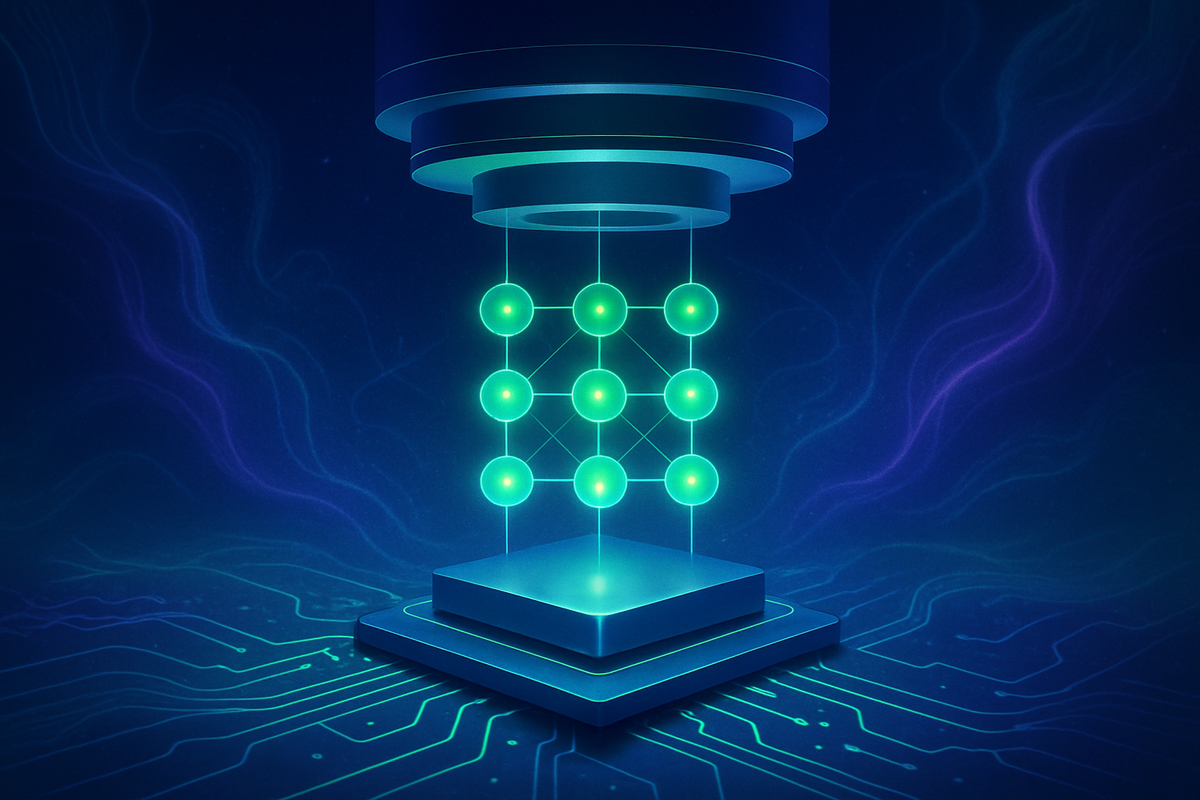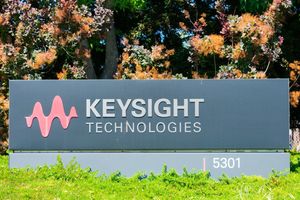
San Francisco, CA – October 10, 2025 – A groundbreaking new research proposal is poised to revolutionize the field of quantum computing by introducing quantum-autonomous gates. This innovative approach aims to significantly reduce the current reliance on precise, time-dependent external control in quantum computers, directly addressing long-standing limitations in coherence and scalability that have hindered the technology's progress.
The immediate implications of this research are profound. By enabling quantum gates to operate with greater independence, scientists anticipate a dramatic improvement in qubit coherence – the ability of quantum bits to maintain their delicate quantum states for longer durations. This enhanced stability is crucial for performing complex calculations without succumbing to environmental noise. Furthermore, by simplifying the intricate control mechanisms currently required for each qubit, autonomous gates promise to pave the way for more scalable quantum processors, making it feasible to build larger and more powerful quantum computers with potentially millions of qubits.
Unpacking the Autonomous Advantage: A Deep Dive into the Research
The core concept behind quantum-autonomous gates is to design quantum operations that require minimal external intervention, allowing qubits to evolve and interact more independently. This reduction in external control is vital for mitigating decoherence and simplifying the intricate control mechanisms currently needed for high-fidelity quantum operations. Researchers are exploring the implementation of these autonomous gates across three leading quantum computing platforms: Rydberg atoms, trapped ions, and superconducting qubits.
On Rydberg atom platforms, the research proposes utilizing the strong, long-range dipole-dipole interactions between highly excited atoms. Techniques like Rydberg blockade, dark-path schemes, non-adiabatic holonomic gates, and the use of circular Rydberg states with significantly longer lifetimes are being explored. These methods aim to create robust gates that are less susceptible to systematic errors and external noise, and to mediate entanglement over larger distances using auxiliary "wire atoms."
For trapped ions, where qubits are encoded in the stable electronic states of charged atoms confined by electromagnetic fields, the focus is on reducing the reliance on precise laser control. Proposals include initiating ion pairs into superposition states and using state-dependent frequency shifts of collective vibrational modes, requiring precise electric waveforms. IonQ (NYSE: IONQ) has been at the forefront, with research into ultrafast state-dependent kicks (SDKs) using nanosecond-scale laser pulses to induce entanglement without residual motional heating, potentially achieving megahertz-speed operations and reducing cooling overhead. Researchers have also demonstrated creating logic gates by entangling two "quantum vibrations" of a single trapped atom, simplifying hardware requirements.
In the realm of superconducting qubits, which are artificial atoms built from superconducting circuits operating at ultra-low temperatures, autonomous gates aim to simplify the microwave photon control. While fast, high-fidelity operations often rely on tunable qubit frequencies and capacitive coupling, new schemes like geometric quantum gates propose using adiabatic evolution in a rotating frame induced by an effective tripod Hamiltonian, relying on controlling magnetic fluxes through transmon loops to drive the system more autonomously.
The significance of this research is amplified by the current timeline of quantum computing development. From the theoretical groundwork laid in the 1980s and 90s by pioneers like Paul Benioff, Richard Feynman, and David Deutsch, to the experimental demonstration of the first quantum logic gate by Christopher Monroe and David Wineland at NIST in 1995, the field has progressed rapidly. The "NISQ era" (noisy intermediate-scale quantum) of the 2010s saw companies like IBM (NYSE: IBM), Google (NASDAQ: GOOGL), and Intel (NASDAQ: INTC) scale superconducting processors to dozens and then hundreds of qubits. As qubit counts increase, the accumulation of errors from precise, time-dependent external control becomes a critical bottleneck. Quantum-autonomous gates offer a crucial pathway to address these challenges, moving closer to the long coherence times and high fidelities required for practical, fault-tolerant quantum computers. Key research institutions involved include the University of Maryland and Chalmers University of Technology, with notable scientists like José Antonio Marín Guzmán and Yu-Xin Wang contributing to recent proposals. While specific market reactions to this proposal are still emerging, the broader quantum computing industry is keenly interested in any advancements that promise to simplify control, enhance resilience to errors, and improve scalability.
Corporate Chessboard: Winners and Losers in the Autonomous Quantum Era
The advent of quantum-autonomous gates is set to profoundly reshape the competitive landscape for companies deeply invested in quantum computing hardware and software. This innovation directly addresses some of the most pressing challenges: qubit coherence, error rates, and scalability, offering significant benefits but also posing new challenges.
Companies specializing in superconducting qubits, such as IBM (NYSE: IBM), Rigetti Computing (NASDAQ: RGTI), Intel (NASDAQ: INTC), and Google (NASDAQ: GOOGL) (via Google Quantum AI), stand to gain immensely. Autonomous gates could help overcome the "wiring problem" and the complexity of microwave control lines currently needed for thousands of qubits in cryogenic environments. This simplification would allow them to scale their processors more efficiently, potentially accelerating their path to fault-tolerant systems.
For trapped-ion companies like IonQ (NYSE: IONQ) and Quantinuum (a subsidiary of Honeywell, NASDAQ: HON), autonomous gates could be a game-changer. While known for high-fidelity gates and long coherence times, trapped-ion systems generally have slower gate speeds. Innovations that simplify and accelerate precise laser control, or enable more robust operations, would significantly enhance their competitive position. IonQ's work on high-speed, mixed-species gates already aligns with this direction, aiming to improve information transfer and reduce noise.
Even photonic quantum computing players like Xanadu and Quantum Computing Inc. (NASDAQ: QCI), and neutral atom companies such as QuEra Computing, Atom Computing, and Pasqal, could see substantial benefits. Autonomous gate principles could enable more stable and precise manipulation of photons or atoms, enhancing their potential for large-scale, fault-tolerant systems by simplifying optical control and addressing mechanisms. This could allow them to leverage their inherent advantages (like room-temperature operation for photonics or high scalability for neutral atoms) more effectively.
However, the path to implementing autonomous gates is fraught with challenges. Designing gates with intrinsic autonomy (e.g., self-correction or self-optimization) requires breakthroughs in quantum materials science, qubit engineering, and control theory. Companies that fail to adapt their R&D priorities towards these new paradigms, or those whose existing architectures prove difficult to integrate with autonomous gate technologies, could lose ground. The competitive landscape will likely favor first-movers who can successfully develop and integrate these gates, potentially leading to increased consolidation or specialization within the industry. Furthermore, the high complexity and cost of developing these advanced gates could strain the resources of smaller players, making strategic partnerships or acquisitions crucial for survival and growth.
Beyond the Lab: Wider Significance and a Glimpse of the Future
The emergence of quantum-autonomous gates is not merely a technical advancement; it represents a pivotal moment in the broader trajectory of quantum computing, with far-reaching implications across industry, policy, and society. This research fits squarely into the intense global race towards fault-tolerant quantum computing (FTQC), the ultimate goal that will unlock the technology's true potential. By intrinsically improving error resilience and coherence, autonomous gates provide a crucial building block for constructing logical qubits and, eventually, machines capable of performing complex calculations with unprecedented reliability.
This development also aligns perfectly with the burgeoning investment in quantum technologies. With quantum computing companies attracting significant funding—over $1.25 billion in Q1 2025 alone, and total investments in quantum technology startups reaching record highs—any innovation that de-risks the technology and provides a clearer path to practical applications is met with enthusiasm. Autonomous gates, by making quantum operations more stable and scalable, serve as a catalyst for this investment boom, accelerating the journey from theoretical potential to real-world impact.
The ripple effects will be felt across the entire quantum ecosystem. Competitors will be forced to accelerate their own research into robust gate technologies, potentially leading to a period of intense innovation. Partnerships between quantum hardware providers and software developers, as well as with traditional industries seeking quantum solutions, will deepen. The regulatory landscape will also need to adapt. The enhanced power and reliability of quantum computers, facilitated by autonomous gates, underscore the urgency of developing post-quantum cryptography to safeguard national security and corporate intellectual property against future quantum threats. Furthermore, the framework for intellectual property (IP) in quantum technology may need revision to balance protection with the need for rapid innovation and knowledge sharing.
Historically, this shift can be compared to other paradigm-altering moments in computing, such as the advent of programmable computers in the 1940s or the internet and mobile computing revolutions. Just as these technologies fundamentally reshaped human interaction and industry, quantum computing, particularly with the robustness offered by autonomous gates, promises an "Automation Age" where computational power fundamentally alters our relationship with information and problem-solving. It's a step on an exponential curve of technological progress, potentially leading to a future where quantum systems operate with an unprecedented degree of self-sufficiency.
The Road Ahead: Navigating the Quantum Frontier
The journey for quantum-autonomous gates, and indeed for quantum computing as a whole, is a dual path encompassing both short-term progress and long-term transformation. In the short term (next 1-3 years), we can expect to see continued focus on hybrid quantum-classical solutions. This means leveraging early quantum capabilities, enhanced by nascent autonomous gate principles, to augment existing classical autonomous systems. Think quantum-inspired machine learning for more efficient decision-making in autonomous vehicles, or enhanced quantum sensors providing superior navigation in GPS-denied environments. Within quantum hardware itself, significant strides will be made in AI-assisted error mitigation and specialized control solutions, aiming to make qubits more stable and less prone to decoherence, thus making quantum gates more autonomously reliable.
Looking further out to the long term (3-10+ years), the vision is nothing short of revolutionary. Achieving more stable and fault-tolerant quantum hardware, driven by advances in autonomous gates, could fundamentally transform autonomous systems. This includes advanced autonomous AI with unprecedented intelligence, capable of real-time processing of vast sensor data for complex decision-making in robotics and self-driving cars. Quantum simulations will accelerate materials science, leading to next-generation components for autonomous vehicles, and ubiquitous quantum communication networks could provide provably secure connectivity for large-scale, cooperative autonomous operations. The ultimate goal is the development of truly fault-tolerant quantum computers that can self-correct errors with minimal human intervention, ushering in an era of "broad quantum advantage" (2030-2040) and "full-scale fault tolerance" (after 2040).
For quantum computing companies, strategic pivots will be essential. This includes forming deep partnerships with traditional autonomous system developers, specializing in niche quantum technologies that offer immediate benefits, and focusing on robust interfaces for hybrid quantum-classical computing. Continued heavy investment in foundational R&D, particularly in error correction, qubit stability, and sophisticated control systems, is paramount. Addressing the severe talent gap by investing in educational programs and actively recruiting interdisciplinary professionals will also be crucial.
Market opportunities are vast, spanning defense and aerospace (secure navigation, advanced surveillance), automotive and transportation (improved ADAS, traffic optimization), robotics (more intelligent robots), and cybersecurity (QKD for secure networks). However, significant challenges remain, including current hardware limitations (high error rates, short coherence times), integration complexity, high costs, a severe talent shortage, and the lack of established industry standards and regulatory frameworks. The success of quantum-autonomous gates will largely dictate whether the industry experiences a breakthrough scenario with rapid adoption and significant "quantum advantage," or an incremental scenario where progress is slower due to unexpected hurdles.
The Quantum Horizon: A Wrap-Up for Investors
The research proposing quantum-autonomous gates marks a pivotal moment in quantum computing. By directly tackling the critical issues of time-dependent control, qubit coherence, and scalability, this innovation lays a crucial foundation for the next generation of quantum machines. These gates promise to make quantum operations inherently more robust, reliable, and ultimately, practical.
The quantum computing market is on a steep upward trajectory, with projections estimating a surge to $7.3 billion by 2030 and potentially $198 billion by 2040. This growth is fueled by massive private and government investments, a strategic shift towards software ecosystems and cloud platforms, and the increasing realization of early commercial applications. Quantum computing is no longer a distant dream but a foundational technology poised to transform industries from finance and pharmaceuticals to logistics and cybersecurity.
For investors, the coming months and years will be critical. Watch for significant advancements in software ecosystems and cloud platforms from major players like IBM (NYSE: IBM), Microsoft (NASDAQ: MSFT) Azure, Amazon (NASDAQ: AMZN) Braket, and Google (NASDAQ: GOOGL) Cloud. Pay close attention to progress in error correction and qubit stability, particularly companies demonstrating high-fidelity logical qubits and clear roadmaps to fault tolerance, such as IBM's goal for an error-corrected quantum computer by 2029. The achievement of "quantum advantage"—where quantum computers demonstrably solve practical problems faster or more efficiently than classical ones—will be a major inflection point, anticipated between 2025 and 2027.
Also, monitor companies focused on hybrid quantum-classical solutions and those making innovations in specialized quantum hardware, including modular architectures ("chiplets") for scalability, like IonQ (NYSE: IONQ) and Rigetti Computing (NASDAQ: RGTI). Keep an eye on the deployment and success of early commercial use cases in specific industries. Finally, sustained government funding and strategic partnerships will continue to accelerate commercial viability, and the growing awareness of "Q Day" (when quantum computers could break current encryption) will drive demand for quantum-resistant cybersecurity solutions. For diversified exposure, specialized quantum computing ETFs like the WisdomTree Quantum Computing Fund (WQTM) could be an option.
While technical challenges such as qubit stability and cryogenics persist, alongside regulatory uncertainties, the accelerating pace of innovation and significant investment indicate that quantum computing, and specifically the advancements brought by quantum-autonomous gates, are setting the stage for a new era of computational power. The time to understand and position for this revolution is now.
This content is intended for informational purposes only and is not financial advice





